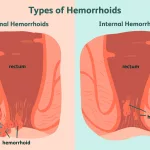Relaxing in a hot tub is an easy way to potentially enhance your well-being. From lowering blood pressure to easing pain and more, here are several benefits of soaking in warm water supported by research.
There may be nothing more restorative than sinking into warm water after a long day. Many people swear by the calming effects of a hot soak, but it can also contribute to improved health.
Across cultures, people have long attributed healing powers to water. Similar to mindfulness practices, Japan’s tradition of communal bathing — known as “sento” — cleanses both body and mind. Visiting a sento is a time-honored Japanese custom, and like forest bathing, it offers multiple health advantages.
While public baths aren’t common in the United States, you can enjoy the benefits of a hot soak at home. In modern Japanese households this private ritual is called “furo.”

What health benefits come from taking a hot bath?
Japan’s bathing culture involves more than removing physical grime. From natural hot springs called “onsens” to public sentos and private furos, bathing in these therapeutic waters is a ritual for washing away daily spiritual fatigue.
“Your skin releases endorphins in response to the soothing warm water the same way that endorphins are released when you feel the sun on your skin,” said Dr. Bobby Buka, a dermatologist based in New York. “Submerging ourselves in hot water can be both therapeutic and reinvigorating because blood flow increases to the skin.”
There are many additional health advantages associated with exposure to warm water or passive heat in a bath. These include:
Lowered cardiovascular risk
Growing research indicates that passive heating — such as spending time in a hot tub, sauna, or warm bath — can lower the risk of cardiovascular disease.
Improved blood sugar control
Soaking in hot water through tubs or baths may help people with diabetes and high blood pressure. A study involving nearly 1,300 participants reported that regular hot tub bathing might aid blood sugar regulation and reduce diastolic blood pressure.
Reduced blood pressure
Research on hot tub use found that some people experienced lower diastolic blood pressure after a hot soak. Other studies point to vascular benefits from passive heat exposure. In a 2022 study, participants who bathed frequently in hot tubs showed lower diastolic blood pressure, and greater bathing frequency was associated with further reductions.
“Stress causes the muscles of the body to contract,” said Dr. Mark Khorsandi, a migraine surgeon in Houston, Texas. “A hot bath can relieve those symptoms and keep the muscles loose. Stretching and moving in the water also provides a low impact workout for discomfort in muscles, joints, and bones.”
Pain reduction
Evidence suggests immersion in hot water — whether baths, hot tubs, or hot springs — can alleviate musculoskeletal pain. A study that included 1,064 people with musculoskeletal conditions, including rheumatoid arthritis, found that of those who took hot spring baths for three or more days, 83.2% reported a notable therapeutic effect.
Enhanced mood and mental well-being
A comparison of people who took immersion baths versus those who showered found that routine soaking appeared to be more beneficial for both mental and physical health than regular showers without full immersion.
Takeaway
Hot baths provide passive heat and may offer a range of health benefits, such as improved blood sugar control, reduced blood pressure, and relief from musculoskeletal pain.
If you have chronic health issues, consult your healthcare provider to confirm that hot baths are safe for you and that you can remain in them for extended periods without risk.


















Leave a Reply
You must be logged in to post a comment.